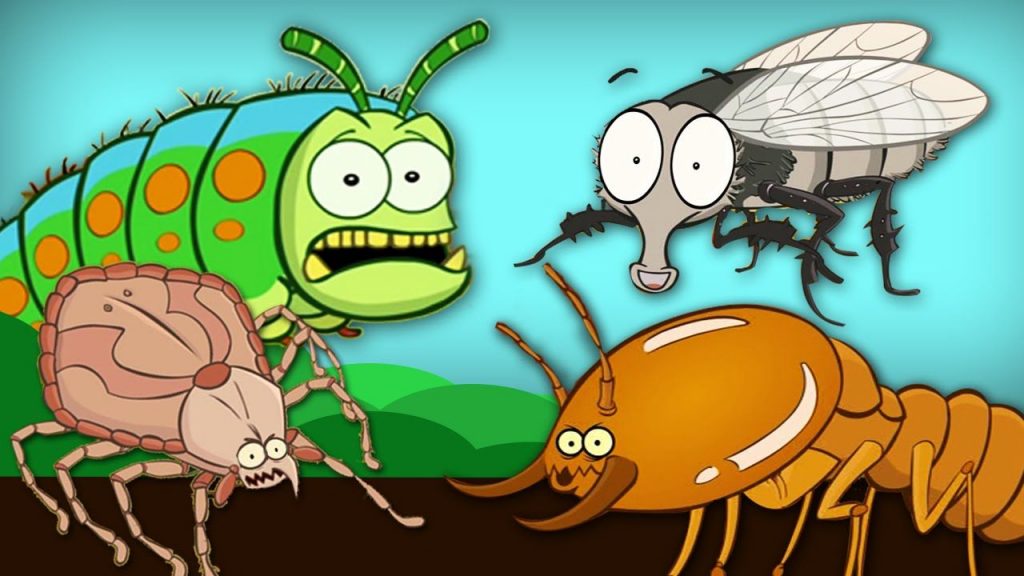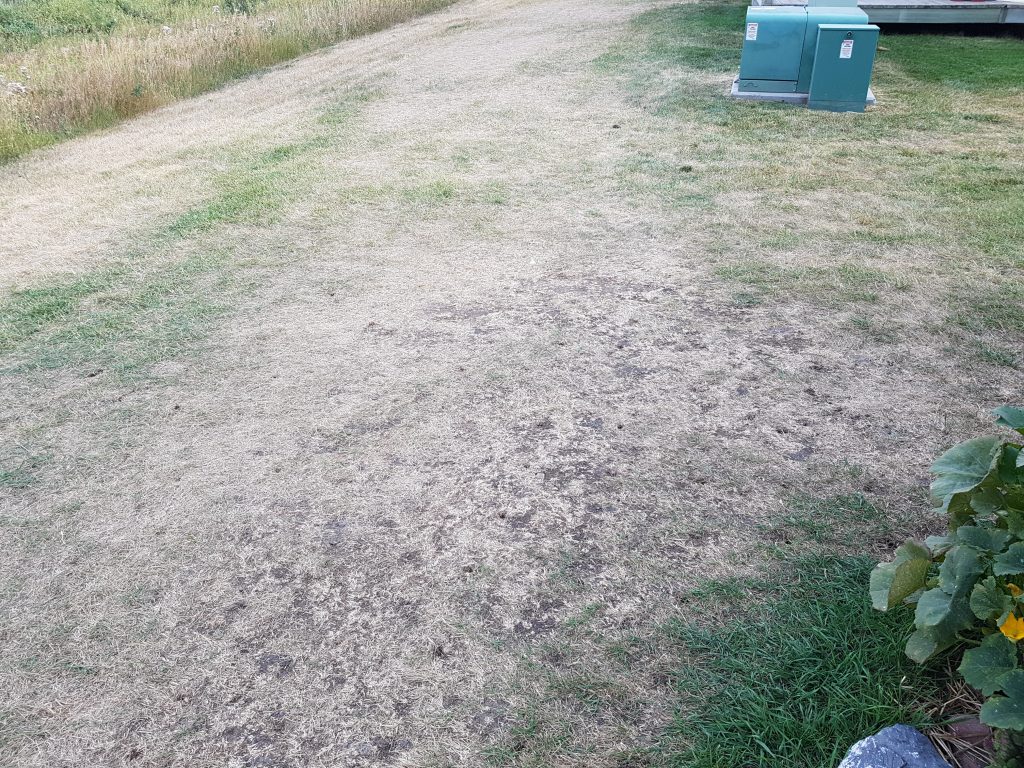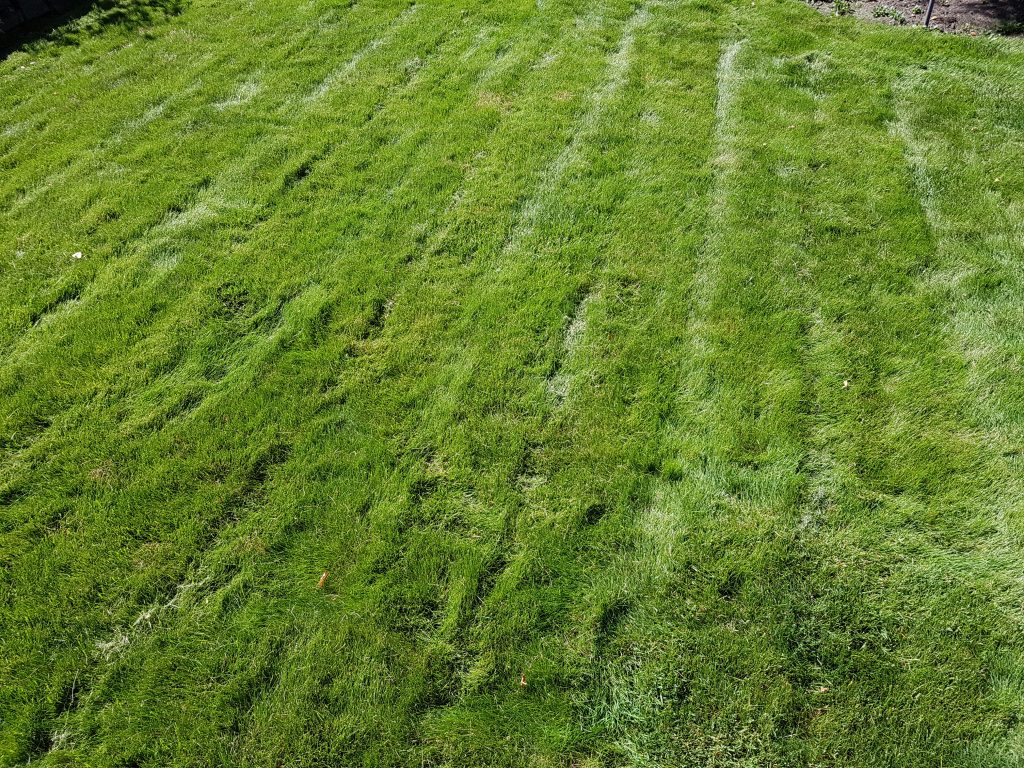
I know it’s almost spring, but wait – just – wait!!
This is the biggest thing in the spring, and spring clean-ups. We get all excited at the first sign of warm weather and want to be outside. Usually, the spring melt and thaw leaves behind debris and dust all over our garden spaces. To our eye, it’s messy and we want to clean it all up. To make our space look neat and inviting. All good things, but….

All the debris and leaf litter left behind by the winter wind and snow, are homes and shelters for all of our tiny garden friends. We need them for our plants to survive and thrive. Little beetles still hibernating, even smaller eggs waiting to hatch in the spring warmth. All laying under that thin layer of leaves and twigs, and the first few inches of the soil. If we are too early in disturbing their protective layer, we risk killing a good number of beneficial microorganisms, aka good bugs, that are so important to our garden and lawn health.
I have read somewhere of an old saying not to plant anything in the garden until you could sit, “bare-bum”, on the soil. That way you knew the soil was warm enough. I don’t know if I would try this in the front rose garden, but the idea is valid. Wait until the ground is thawed and you can see things crawling and flying around. Look for new growth on the lower parts of the perennial plants.
A few other things to consider.
Tree Pruning
There is a proper time for a tree to be pruned. Not all trees are pruned at the same time. Flowering trees should be pruned in the spring, but after they flower. Other trees “bleed” profusely, meaning sap almost pours out of the branches, if they are pruned in the spring.
Here’s the thing. Trees, in general, never need to be pruned. We prune trees mainly in an urban setting for safety of the people under the tree, and to speed up and aid the tree in it’s natural process of dropping limbs that are no longer useful to the tree. Some trees are pruned for aesthetics, but that’s a whole other thing.
Remember the Lorax??

Look at tree pruning the same as surgery. Only prune what is necessary. Not too much at a time. Clean your instruments often especially between trees. Always prune with the health of the tree in mind. What happens above ground is balanced underneath, so for every branch removed, a root is discarded by the tree. This could make the tree unstable in the wind, if too much is pruned off the top.
Planting things that don’t belong

Planting things that don’t belong should be avoided. Note the tree in the foreground of the picture above. I was once asked to plant bamboo in a back yard in Calgary, Alberta. After a few attempts, by a few people, to dissuade the client, we planted it in the back yard. Along the middle of June we received a not uncommon frost for that time of year, and it died. It is possible to grow plants outside of their normal climate. It is also possible to create a “micro-climate” in your garden, but a lot of time and effort and planning must go into that.
Plants invited to grow in proper soil, given the proper amounts of sun, water, and nutrients from the start, require less ongoing input. The more we work with nature, the less we have to work in our garden, and the more time we have to enjoy our space. So we plant native species, and complement them with plants that are at least from a similar climate to our own. Give them the elements needed to be healthy, and then work to maintain the balance of everything in the garden. Check out the Plants with a Purpose page and the Planting Guilds page as places to start. Gardening is mainly planning (90%), 10% doing. The more thought goes into this stage. The less work later on down the road.
Lawn care in the spring can be exciting!
The first mow. The first lawn in the neighbourhood with a freshly manicured, green carpet around the house. It is another area to wait. Until things are warmer and the grass actually is tall enough to mow. It is always a good idea to leave the grass a bit long in the fall for winter protection of the soil and insects. Longer grass holds more moisture and nutrients in the soil then shorter grass, and can handle heavier traffic also, protecting those micro organisms we keep talking about.


Think about leaving your grasses a bit taller all summer, and notice the difference in water usage if you irrigate your lawn, and how much greener it is than the shorter grasses. Native grass species will help in those areas as well.
Read more about Aerating and Power Raking here
Spring time broad applications of pesticides and herbicides are ridiculous! There I said it.
If there are weeds in the lawn, or an infestation of something in the garden, they are all there for a reason. Spraying or dusting everything, just to kill the unwanted beings, does nothing to fix the problem. If the soil is right for dandelion and not for grasses or roses, then the dandelion will win every time, no matter how many times you pull it out.

Before we add anything foreign to the soil or onto the plants, we should understand why things are there.
Dandelions, as an example, like to grow in compacted, degraded soil that usually lacks available calcium and humic material. Grasses do not like those conditions. So spraying weed killer on the dandelion will kill the dandelion, however, grasses still don’t want to grow in those conditions no matter how much grass seed is put down.
Uh oh, here comes another dandelion seed!!
An application of organic compost of some kind is the best booster for your lawn and garden.